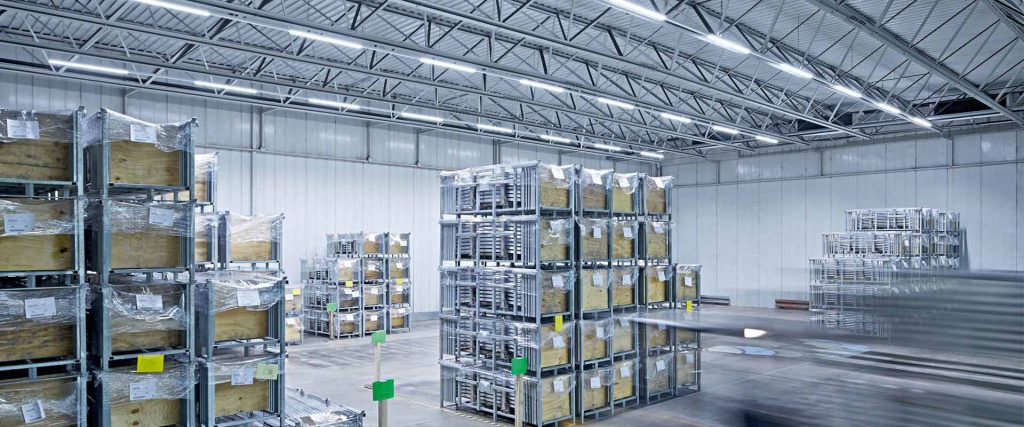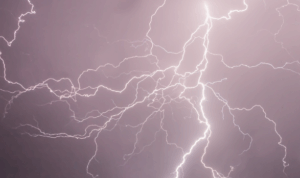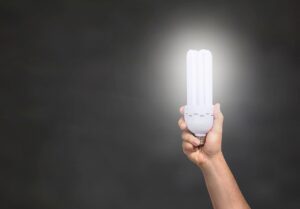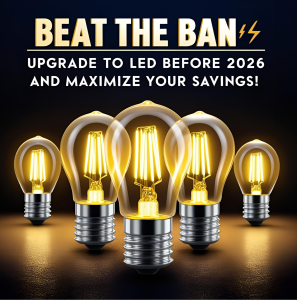Energy costs are one of the biggest expenses for businesses. In Ontario, commercial customers can expect to pay about $0.20 per kWh of electricity charges during the daytime (9 am – 5 pm). To save on energy costs, many businesses are turning to LED retrofit projects. An LED retrofit involves replacing your existing lighting fixtures with new LED fixtures.
LEDs use less energy than traditional lighting systems and can last up to 50 times longer. This means that you could see significant savings on your energy bills by making the switch to LEDs. Not only will you save money, but an LED retrofit can also improve the quality of light in your business space and make it more comfortable for employees and customers alike.
If you’re thinking about undertaking an LED retrofit project, this blog post will provide you with everything you need to know to get started, including what type of bulbs to choose and how to select a reputable contractor. We’ll also dispel some common myths about LEDs so that you can make an informed decision about whether or not they’re right for your business.
Why retrofit to LED lighting?: the benefits of making the switch
LED lighting has become increasingly popular for businesses across the world due to its many advantages. LED lighting retrofitting, or swapping out traditional light sources for LED lights, is a great way for businesses to save money on utility and maintenance costs over time. LED lights typically last up to five times longer than their predecessor versions, and even though they come at a higher upfront cost, their efficiency and long-term savings make LED lighting an attractive option for businesses. Additionally, LED lights emit far less heat than traditional light sources, providing a safer work environment while also reducing energy usage. Retrofitting to LED lighting offers businesses many benefits that can help reduce energy expenses and increase safety.
How to know if your business is ready for an LED retrofit
If you’re considering retrofitting your business with LED lighting, it’s important to ask yourself if your business is ready for the upgrade. LED lighting does require an initial investment however, that investment can come with many rewards in energy efficiency and cost savings. Determine if you are still utilizing HID or fluorescent fixtures, as LED lighting works as a direct replacement. Consider factors such as the number of lumens needed to light up your space and the current lamp power you have installed. All these points will give you a better understanding of how LED would work in your environment. Finally, evaluate whether LED is right for you by conducting a trial run or consulting industry experts who have successfully completed LED retrofits in the past.
What kind of LEDs are available on the market today?
There are many different types of LED lights available on the market today for commercial use, each with their own unique features and benefits. Some popular options include LED panel lights, LED tube lights, LED downlights, LED high bays, LED flood lights, and LED retrofit kits. LED panel lights are ideal for use in offices and other indoor spaces, offering a sleek and modern design with uniform lighting. LED tube lights are a popular choice for industrial and warehouse settings, providing bright and efficient lighting for large areas. LED downlights are commonly used in retail spaces, hotels, and restaurants, and provide directional lighting for specific areas. LED high bays are ideal for use in high-ceiling areas, such as gyms and warehouses, while LED flood lights are ideal for outdoor lighting and security. LED retrofit kits are designed to easily upgrade existing lighting fixtures to LED technology, providing a cost-effective solution for businesses looking to switch to LED lighting. With so many options available, businesses can easily find the right LED lighting solution to meet their specific needs and budget.
The installation process: what you need to know
Choosing the right LED supplier for your business is important to ensure that you get the best products, services, and support for your LED lighting retrofit. Here are a few key factors to consider when making your selection:
- Quality and reliability: Look for a supplier that offers high-quality LED products that are reliable and backed by a warranty.
- Technical expertise: Choose a supplier with a team of experts who can provide technical support and guidance throughout the LED retrofit process.
- Pricing and value: Look for a supplier that offers competitive pricing and a good value for the quality of the products and services offered.
- Customer service and support: Choose a supplier with a strong track record of providing excellent customer service and support, to ensure that any questions or issues you may have can be quickly and efficiently addressed.
- Energy savings and sustainability: Consider a supplier that is focused on energy savings and sustainability, and can provide you with products and services that will help you achieve your energy and sustainability goals.
By considering these factors and doing your research, you can find the right LED supplier to help you successfully retrofit your business to LED lighting.
The installation process: what you need to know
The LED lighting retrofit installation process can vary depending on the specific needs and requirements of your business. However, there are a few key things you need to know to ensure a successful installation:
- Preparation: Before the installation, your LED supplier will work with you to assess your lighting needs, design a lighting plan, and identify any potential challenges that need to be addressed.
- Equipment and materials: Your LED supplier will provide all the necessary equipment and materials for the installation, including LED lights, fixtures, and any additional components needed for a smooth installation process.
- Installation timeline: The installation timeline will vary depending on the size and complexity of the retrofit, but your LED supplier should provide you with a detailed schedule and timeline for the installation process.
- Electrical work: In some cases, electrical work may be required for the LED retrofit, such as upgrading electrical panels or running new electrical circuits. Your LED supplier should be able to handle these aspects of the installation, or work with an electrical contractor as needed.
- Testing and commissioning: After the installation is complete, your LED supplier will perform a thorough test and commissioning of the LED lighting system to ensure that it is operating properly and providing the desired level of lighting.
By working with a reputable LED supplier and following the installation process, you can ensure a smooth and successful LED lighting retrofit for your business.
How to properly maintain your new LED lights
Proper maintenance is essential to ensuring the longevity and optimal performance of your LED lights. Here are a few key tips for proper LED light maintenance:
- Cleaning: LED lights should be cleaned regularly to remove dust and debris that can accumulate on the surface and impact lighting performance. Use a soft, clean cloth and a mild cleaning solution to wipe down the LED lights.
- Avoiding physical damage: LED lights should be handled with care to avoid physical damage that can impact their performance. Do not touch the LED lights with bare hands, as the oils from your skin can damage the surface.
- Monitoring performance: Regularly monitor the performance of your LED lights to ensure that they are providing the desired level of lighting. If you notice any changes in performance, such as flickering or dimming, it may be an indicator of a problem that needs to be addressed.
- Replacing failed components: If any components of your LED lights fail, they should be promptly replaced by a professional to ensure that the lights continue to operate properly.
By following these maintenance tips and working with a reputable LED supplier, you can keep your LED lights in good working order and ensure that they provide reliable, efficient, and cost-effective lighting for years to come.
In conclusion, LED lighting retrofit is a smart investment for businesses that want to reduce energy costs, improve lighting performance, and enhance their bottom line. By choosing a reputable LED supplier, properly maintaining your LED lights, and following best practices for installation and operation, you can maximize your savings and enjoy the many benefits of LED lighting. Whether you are looking to retrofit a single facility or multiple locations, LED lighting offers a reliable and cost-effective solution that can help you achieve your energy and sustainability goals. So if you’re ready to take the next step towards a more energy-efficient future, consider LED lighting retrofit for your business.




































